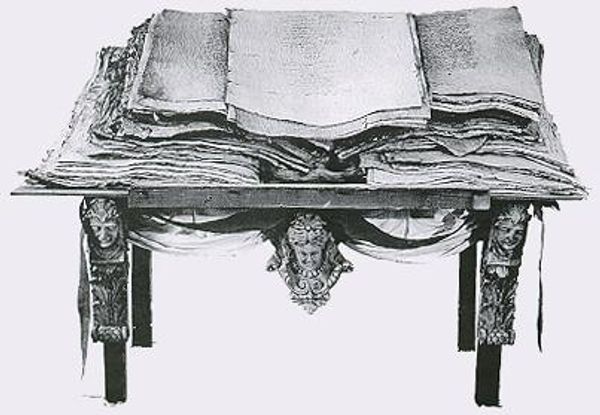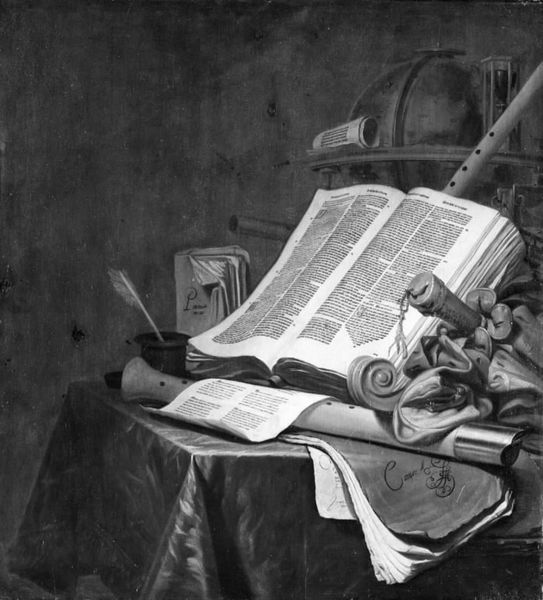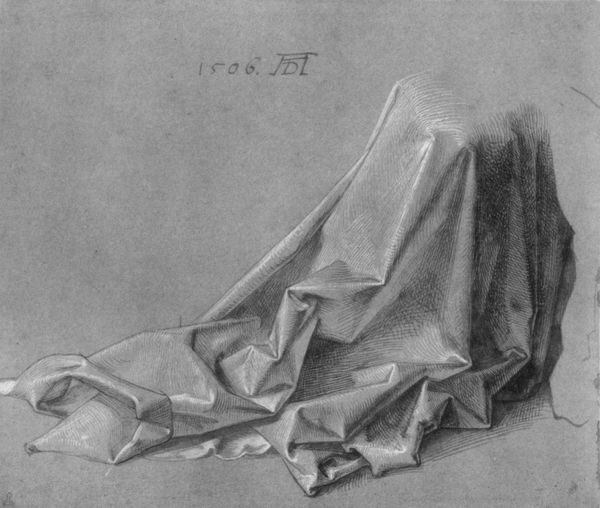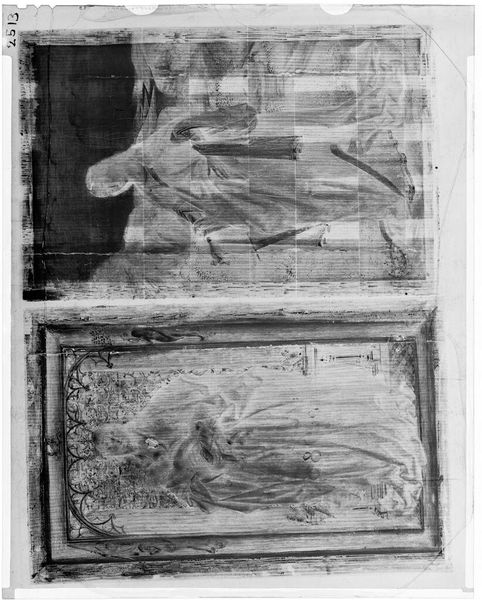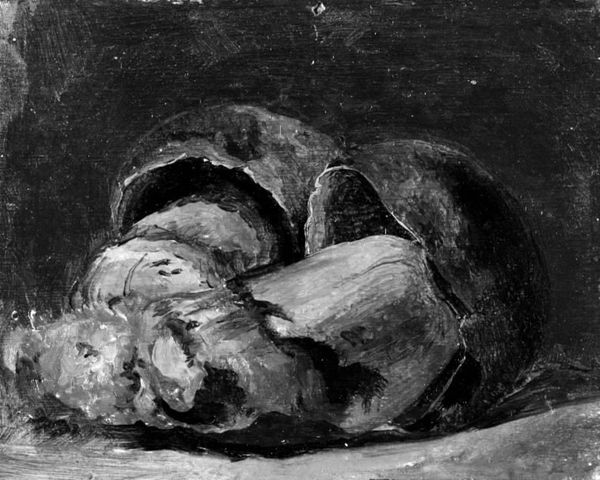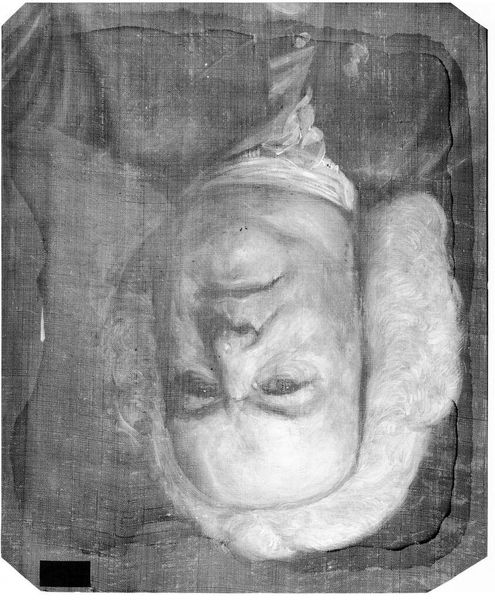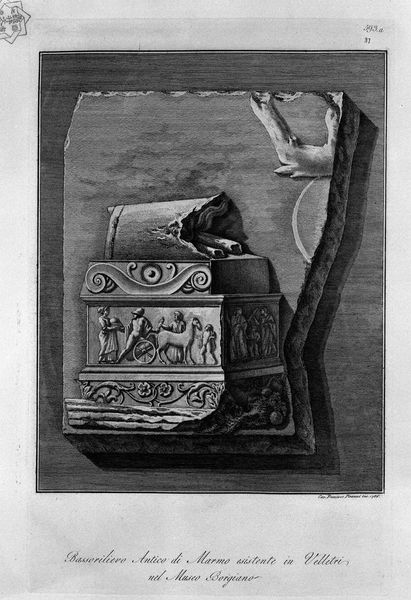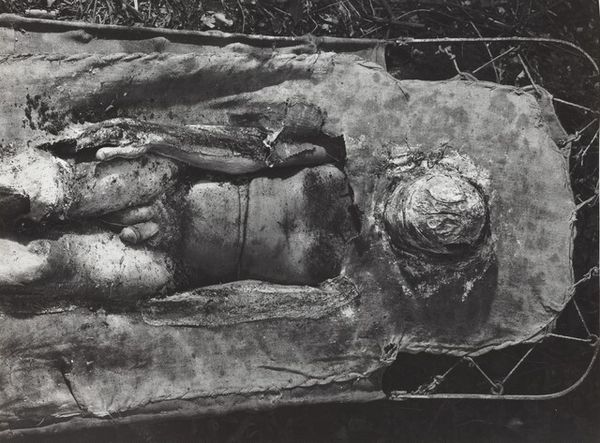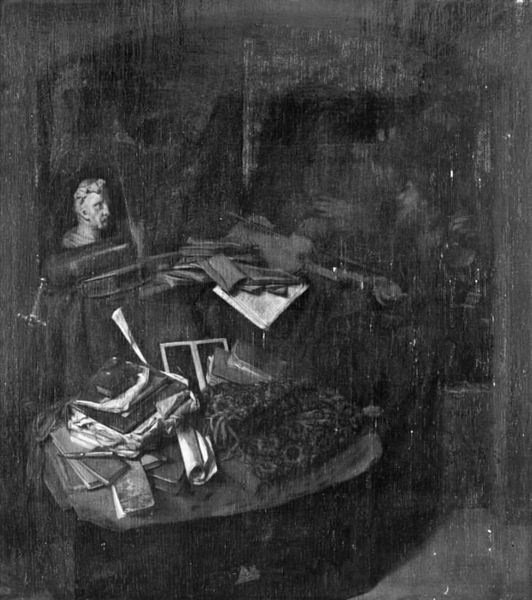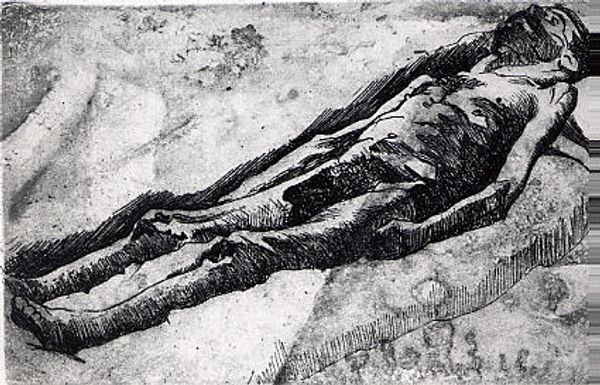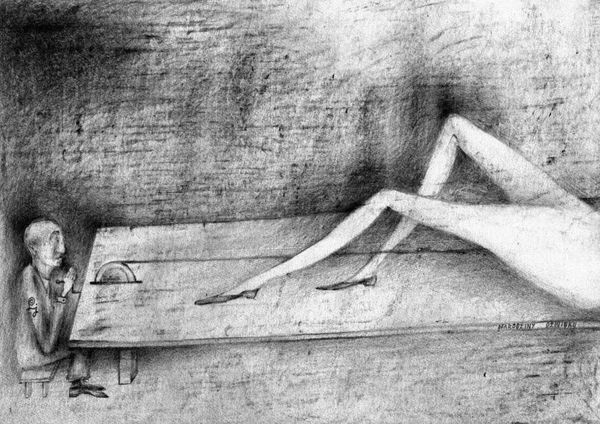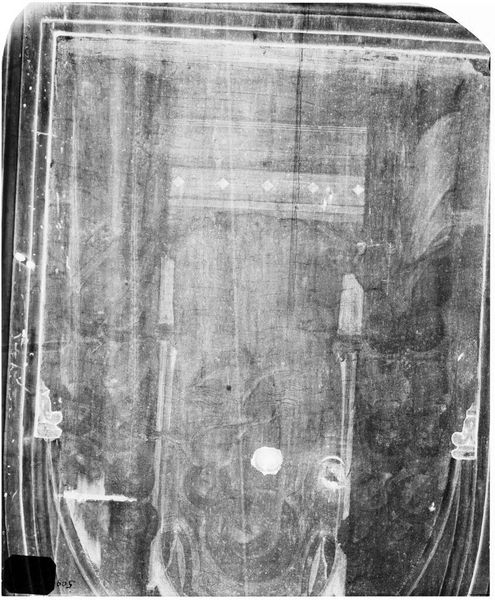
drawing, print, paper, ink, woodcut, charcoal
#
still-life
#
drawing
# print
#
charcoal drawing
#
paper
#
ink
#
woodcut
#
charcoal
#
northern-renaissance
#
charcoal
Copyright: Public domain
Curator: Albrecht Dürer created "Lectern with Books" back in 1521. It resides now in the Albertina in Vienna, captured with charcoal, ink, and possibly some woodcut techniques. What's your take? Editor: My first impression is one of immense, quiet labor. The weight of those books—you can almost feel the vellum, the hours of scribing, the sheer *mass* of accumulated knowledge. It's heavy. Curator: It's interesting you mention the 'weight' of the knowledge captured in this still life— I wonder, was Dürer inviting viewers to explore the human thirst for wisdom during the Northern Renaissance, a period deeply connected with studying classic books, with his play of charcoal and ink, like secrets unfolding on paper? Editor: More likely, it was a comment on production. Consider the materials: charcoal is readily available; paper, increasingly so due to innovations in milling. The "thirst for wisdom" narrative hides the labor involved in creating, binding, and distributing these tomes. Think of the tanners, scribes, and distributors who handled them every day—the economics surrounding texts like these were, and are, a complicated thing. Curator: True. There’s a stillness that breathes, don’t you think? Perhaps, Dürer wanted us to question whether those books give solace or knowledge or just become mere decorative things with all those clasps, and those delicate bookmarks gently spilling out… Editor: And who are these *things* for? The average person couldn't read, let alone afford such items. This image feels more like an advertisement for a new form of material luxury masked in intellectualism—which resonates today, given who has access to knowledge, and who doesn't. Curator: Hmm. Maybe there’s a layer of illusion embedded, with ink strokes that turn the ordinary, plain, academic object into an image brimming with human feeling, or even melancholy. We make these books, but are we enriched by them, or are we simply making idols of our work? Editor: Maybe. Or, perhaps, he's just documenting a shift in how knowledge is produced and consumed, in the form that would come to represent our "selves"—through these printed objects that come to life, full of voices other than ours. Curator: Maybe you're right; maybe both! Still, such power drawn from a modest composition—a book and a light, as if this very idea is what sparks human history! Editor: Indeed. Makes one think about what objects now will tell future societies of our own moment of transformation and all its complicated materials.
Comments
No comments
Be the first to comment and join the conversation on the ultimate creative platform.
